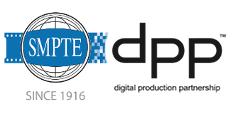SMPTE, DPP Partner on IMF for Broadcast and Online

LONDON and WHITE PLAINS, N.Y. —Two major production technology organizations are teaming up to brew a new flavor of the Interoperable Master Format otherwise referred to as “IMF,” in time for next year’s NAB Show.
“The final publication of the IMF specification is expected to take place before the 2018 NAB Show,” stated the announcement distributed by the Society of Motion Picture and Television Engineers. SMPTE, along with the Digital Production Partnership, intends to create the new standard.
“Working with SMPTE, the North American Broadcasters Association, the European Broadcasting Union, manufacturers, and end users across the media industry, we plan to create a specification that brings the benefits of IMF more fully into the broadcast and online realm,” said Mark Harrison, DPP managing director, in the SMPTE release.
IMF is described in the SMPTE standard ST 2067, (standards documents are housed in the IEEE Digital Library). In a nutshell, IMF is a method for transmogrifying a master file into various versions for delivery to many platforms. The current version is more geared toward studios and less toward broadcasting because of the codecs it does and does not support. Netflix, for example, uses IMF because it licenses content from multiple studios. (See, “IMF: A Prescription for Versionitis,” Netflix Tech Blog,” March 7, 2016 and “IMF: Unleashing the Benefits of File-Based Content,” TV Technology, Feb. 15, 2017.).
The fragmentation of display platforms is driving the initiative for broadcasting, according Andy Wilson, head of business development for DPP in a statement from the London-based tech consortium formed by the BBC, ITV and Channel 4.
“Broadcasters are looking to target new audiences and territories and monetize their program assets over a much longer period of time,” he said. “But while they are doing that they also need to maintain quality. So the need to keep high-quality files for re-versioning for new broadcast and online deliveries is more important than ever.”
SMPTE said this new version will “deliver a technical specification for IMF in broadcast and online applications as a breakdown of different elements—video and audio packages, composition playlists, and output profile lists—with references to all relevant SMPTE standards.”
The final draft proposals will proceed “in conjunction with a series of plugfests and product tests,” SMPTE said. When it’s done, it will be made available to manufacturers for creating compatible readers, writers and analyzers.
DPP said the partnership with SMPTE builds on its own analysis of business requirements for creating a global IMF standard with input from NABA and EBU in particular. The partnership is said to be the “first step in a wider move by SMPTE to take a new approach to standards and specifications, and will initially pilot the delivery of the IMF broadcast specification.”
SMPTE Executive Director Barbara Lange said the effort to extend IMF “comes in response to the changing media landscape where content delivery to multiple territories is increasingly the norm.”
Bruce Devlin is the SMPTE governor for the U.K. Region as well as “Mr. MXF” for his pioneering co-invention of the Material Exchange Format, a type of file wrapper that can be used in the IMF architecture. (Refer again to the Netflix blog.) Devlin said the SMPTE-DPP work will drill down into “specific television metadata needs—from the inclusion of third-party QC reports to the metadata for compressed surround audio—of using IMF in TV applications."
Howard Lukk, SMPTE director of Engineering and Standards, said the partnership with DPP breaks new ground for SMPTE.
“This project will establish a streamlined specification framework that complements our wide range of other due-process engineering documents such as standards,” he said.
Get the TV Tech Newsletter
The professional video industry's #1 source for news, trends and product and tech information. Sign up below.
